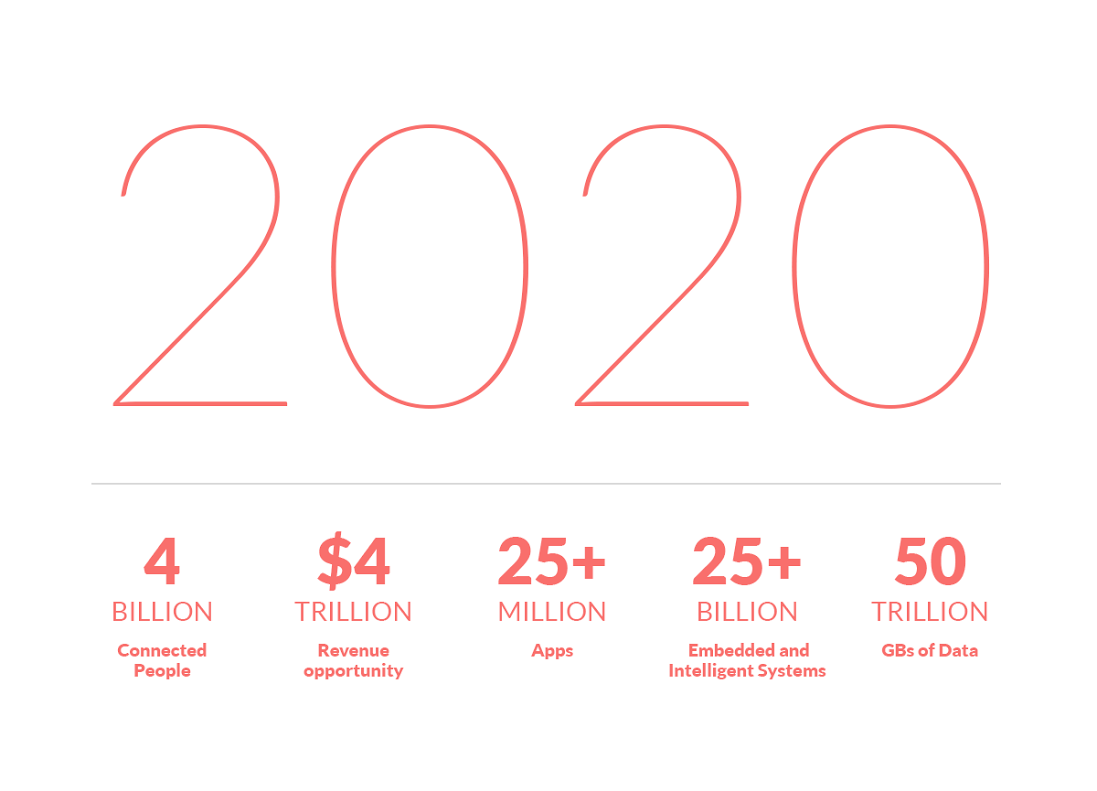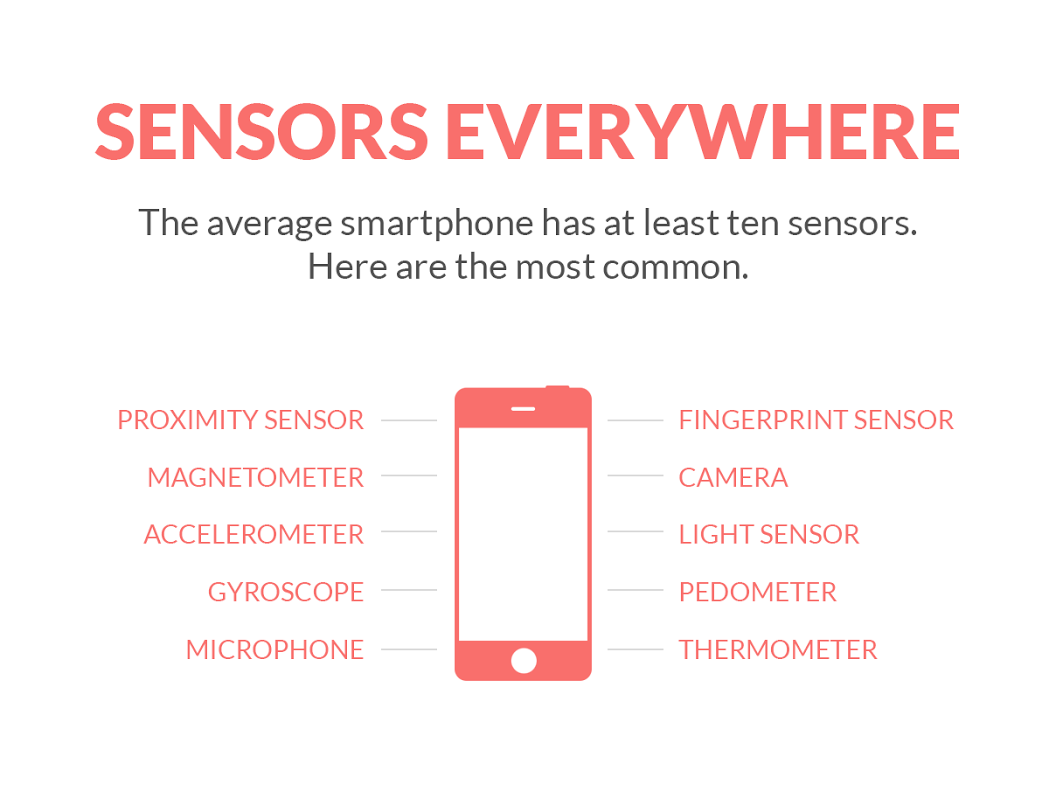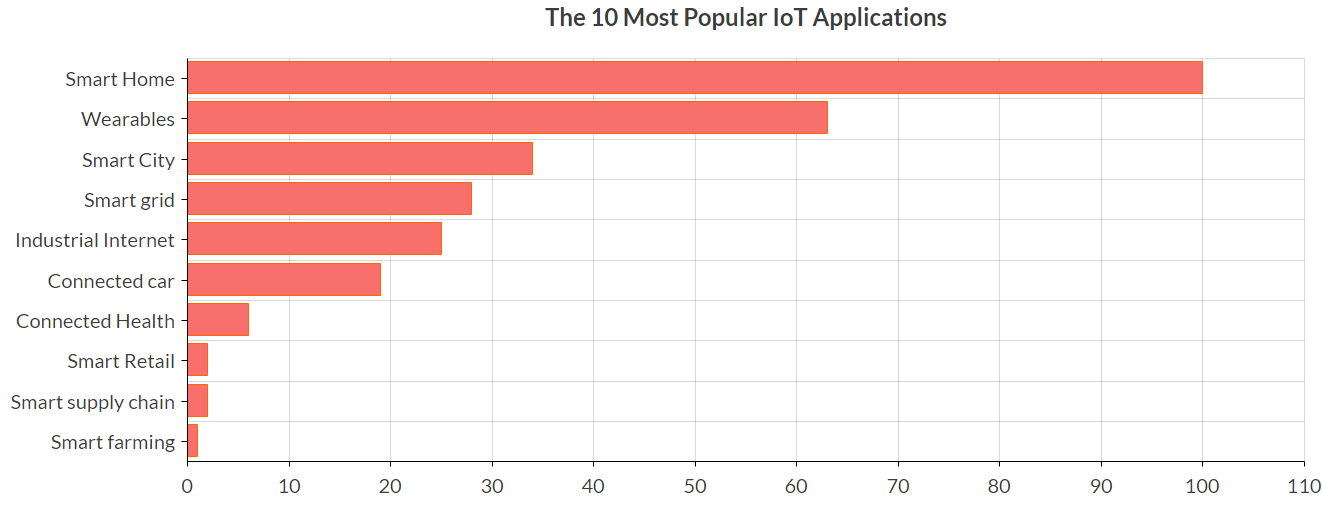The Internet of Things (IoT) is one of the most promising and discussed technology subjects of our time. We decided to disclose why does this issue get so much hype and dispel some of the popular myths about IoT app development that is in the air.
Before we start, let`s check the market outlook provided by Mario Morales, IDC`s Program Vice President. As we can see, in the next few years we are expecting a massive technological expansion that won`t leave aside a single area of our lives.

The IoT describes the idea of a totally interconnected world, where all physical devices are linked in with the global network. When speaking about “things,” the average user imagines computers, tablets, smartphones, and wearable devices. More sophisticated users can also add smart houses and smart cities technologies.
In fact, the concept is much more advanced and includes not only “the things”, but also a vast amount of produced data.
The field of the Internet of Things has been increasing recently. This can be explained by three factors:
- The rapid growth in the number of mobile devices.
According to a Cisco report, there were about 500 million devices in 2003 compared to 12.5 billion in 2010. In seven years the number of connected devices per person increased by 2250% and continues growing since then. - Reduction in the cost of sensors.
At the beginning of the 90th, the average price of the sensor was between $20-25. Till the end of the decade, the regular cost was about $5 per sensor. Today`s price is less than one dollar. - Development of data storage technologies.
The biggest issue of IoT is to collect, keep, and analyze the data that “things” produce. Cloud storage technologies’ evolution enabled managing big data.
The IoT is rapidly expanding and affects major shifts in hardware and software of connected devices. However, the core idea of the Internet of Things is not just collecting information. It comes to two-way communication where the IoT devices send back the analyzed information that users can rely on when making decisions.
For now, the technology is still in the evolution process. It will take years to form completely, but all building blocks are already in place.
Not the last place in this revolution is assigned to the smartphone. Right now The App Solutions team works on such a project and as the IoT app development company, we are facing some common myths.
Myth #1 The IoT is a Future Technology
It is a common misconception that the Internet of Things is something from science fiction movies or at least the technology that has only started maturing. In fact, this is just the next technological step. But the vast amount of what is causing the IoT revolution (microprocessors, microcontrollers, sensors, iBeacons, RFID, etc.), is already existing and widely used.
For instance, let`s take a look at your smartphone:

What is the Internet of Things do is evolving existing technologies further and adding new features, capabilities, and info structure?
Myth #2 The IoT Connects the Whole World
In the average consumer`s impression, the actual Internet of Things is the world, where all devices connected to each other and “talk” to each other. Your lighting system provides information to the security system that says the garage door to open, and all this is at the distance of your fingerprint in the smartphone’s app. Besides, all these systems communicate with car sensors, healthcare and so far and so on.
For now, it doesn`t work so. There are some challenges though that the industry needs to overcome in the nearest feature. Primarily we are talking about security, interoperability, and bandwidth. But according to Gartner research, the prospects are dazzling. Today the average household includes about five devices, but the next few years this number will increase up to 500.
Myth #3. The IoT application development cost
As the matter of fact, the process of the Internet of Things application development is quite similar to any other.
Let`s look closer at the whole “how to develop apps for the Internet of Things” process. At the beginning of this path, there are one or a few sensors. They collect material and send it to the IoT app layer by dint of Wi-Fi, Bluetooth, or any other network connection. The received data could be stored internally, or the layer sends it to cloud data storage. In some cases, the amount of data is enormous, and you need to develop an algorithm for analysis or purchase existing solutions.
With the help of the mobile app, a user gets access to all this information. Our UI/UX designers contribute to simplifying this information flow and ensure users with a fast and convenient experience.
It should be clarified that the described process shows some basic workflow and depends on business goals and scenarios. This IoT component takes a minimum of 3-6 weeks of additional time at least. The rest time is the same for non-IoT apps.
To reduce cost and optimize time spent, our team can ensure development with pre-built components and selected IoT platforms.
This approach is particularly useful during the initial stages of application development and while building MVP.
Myth #4. The IoT is all about “things” and apps
So, we have sensors that make all “things” being connected to the global network. We have the ease to use custom applications for every single platform. Is it enough to develop an IoT app? The answer is no. A pivotal role in the whole process is being played by the data that “things” produce and the analysis.
Handling such information arrays is a primary technological challenge nowadays. Lots of companies direct these complex scenarios to IoT cloud platforms. Some services could be part-free or even free for small deployments.
This model allows the following:
- To register the device and provide its management and monitoring;
- To collect and store data from the number of devices;
- To work with big data;
- To send data to other systems, devices, and apps;
- To handle and respond to the performance device events.
Cisco Corporation, the company that makes a tremendous contribution to the branch development, is currently working on the “Fog computing” concept. The definition says that fog extends the cloud so that it could be closer to the things that produce data in IoT. Special devices called fog nodes could be installed on every single IoT thing.
The fog doesn`t replace the cloud, it’s rather a collaboration in order to optimize available resources.
The fog computing allows:
- To analyze the most time-sensitive data close to the place where it is produced.
- To send some parts of data to the cloud for long-term storage.
Myth #5. IoT creates security and privacy concerns
New technologies often contain the potential for abuse or even data leaks. Confidentiality and safety issues are the top priority. The work about data security is being provided on several levels. When the data is moving through the cloud or between devices, the privacy-enhancing technology infrastructure standard can be adapted for protection. Also, some government regulations mandate information protection regardless of the storage location.
The security model consists of:
- A reliable and secure OS;
- Authentication and access control;
- Unique identifiers;
- Powerful application security.
We have also conducted three steps toward security program development. You can use them as a checklist while processing security testing:
- Risk evaluation
- Vulnerability scanning
- Data privacy protection inspection.
Takeaway
According to Gartner, this year the number of connected devices of IoT is 30% is getting bigger than it was back in 2015 and totals up to 6.4 billion items. The growth rate is truly enormous. For the success of any business, it is crucial to notice and grasp such trends to leg up on the competition.
The App Solutions team is ready to work with your ideas, overcome the myths and doubts, and create truly innovative products.
Here are the ten most popular IoT applications according to web analytics.
If you have found your business sphere, contact us for IoT app consultation.

